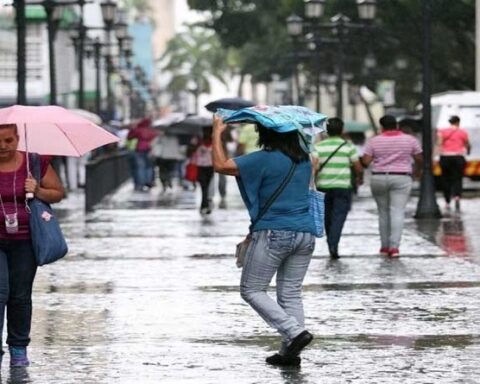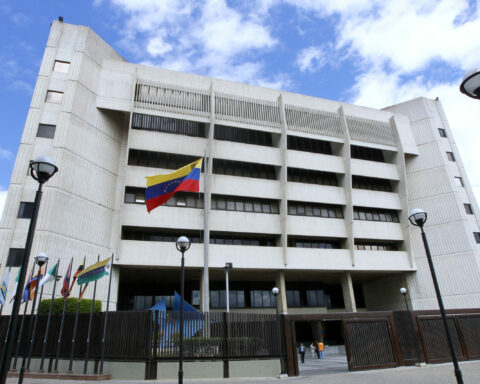The IDB reported that the remittances received by the countries of Latin America and the Caribbean during the first half of 2022 continue with the growing trend that has been observed since the second half of 2020
The remittances received by the families of migrants from Latin America and the Caribbean are an essential contribution to their subsistence and, in many cases, a determining factor in preventing them from falling below the poverty line. To deepen knowledge about remittances in the region, the Inter-American Development Bank (IDB) continues with its process of monitoring and analyzing remittances based on data published by the central banks of the region.
In its latest report, the multilateral organization indicated that in the first quarter of 2022, remittances grew by 31,678 million dollars, which meant an increase of 14% compared to the same period of 2021, while in the second quarter an amount of $36,325 million was registered, that is that is, 17% more than the same quarter of the previous year. This period represents “the highest value recorded in a quarter so far,” he said.
“The remittances received by the countries of Latin America and the Caribbean during the first half of 2022 reached $68,002 million, continuing the growing trend that we have observed since the second half of 2020,” highlighted the multilateral organization.
Of this amount, remittances of resources by family or friends to citizens of South American countries reached “a new quarterly historical maximum” with an amount received of $6,784 million between April and June, a figure 8.3% higher than that of previous quarter and 12.3% higher than that observed in the same quarter of last year.
Argentina and Brazil were the countries whose remittances grew the most during the second quarter, 32.1% and 16.5% respectively compared to the same quarter of the previous year, driven by the recovery of employment in the countries where migrants from these countries reside and by the depreciation of the peso in the Argentine case.
Peru was the country whose remittances grew less during this quarter by 4.5%, while Paraguay registered 5.1% less remittances received during the second quarter of the year compared to the same period of the previous year, as an effect of the statistical drag of the unusually high figures that were observed in the same quarter of the previous year, the IDB explained in its report.
In accordance with their trends, the remittances received by Chile and Ecuador grew 13.8% compared to the values of the same quarter of the previous year, while the remittances received in Colombia and Peru grew a little less, 11.5% and 7.3% respectively. The remittances that Bolivia received also grew, although a little less, only 3.7% compared to what was observed in the same previous quarter.
“In the forecast for the end of the year, the subregion is expected to receive an amount of remittances above the 2021 level between 13.5% and 14.5%,” the IDB indicated.
Regarding remittances to Venezuela, The multilateral organization does not have official statistics because the Central Bank of Venezuela (BCV) does not offer the information. However, projections by private consultants such as Team Anova maintain that the amounts at the end of 2021 could have reached $3.5 billion. “The proportion of households that receive income from remittances is 24.3%. On average, these households reported receiving 65.8 dollars per month,” Anova said in a report.
On the other hand, according to figures from the Bank of the Republic of Colombia, at the end of 2021, $2,650 million were sent from that country to Venezuela. “Emitter data shows this is a spike,” reviewed the newspaper The Republic.
This money is sent by the more than 2.2 million Venezuelans who, according to the authorities, reside in Colombia and who are working in the country. “To the extent that that number grows, the Venezuelans who are joining the labor market, there are more elements for remittances to grow,” said Juan Nicolás Garzón, professor at the Faculty of Law and Political Science of the University of La Sabana. He stated that this will lead to the numbers continuing to rise in the coming years.
*Also read: Venezuela could close 2022 receiving $22 million monthly in legal remittances
In the Caribbean
Remittances received by Caribbean countries in the second quarter of the year reached an amount of $4,471 million, a figure 4.1% higher than that of the previous quarter and slightly higher by 0.4% than that observed in the same quarter of 2021, indicated the IDB.
The Dominican Republic was the country whose remittances decreased during the second quarter (-9.2%), driven by the statistical drag caused by the unusual increase observed in the same quarter of 2021 and which means that this year’s rate has a negative sign. In any case, the amount received in the year is higher than the values observed before the pandemic, so the flows seem to converge to the trend values prior to the crisis.
For this same reason, the remittances received by Jamaica and Trinidad and Tobago in the second quarter of the year are the ones that grew the most, 9.9% and 43%, since in the previous year they showed a noticeably lower growth rate (negative in the case of Trinidad and Tobago) to that of their trend levels. For its part, remittances received by Haiti grew 1.8% compared to those received in the same quarter of the previous year.
“In the forecast for the end of the year, it is expected that the Caribbean subregion will receive an amount greater than 2% to 3% of remittances,” said the IDB.
On the other hand, the remittances received by the Central American countries reached an amount of $8,595 million during the first quarter and during the second quarter marked a new quarterly historical maximum with an amount received of $10,027 milliona figure 17.9% higher than that observed in the same quarter of last year.
“In the forecast for the end of the year, the Central American subregion is expected to maintain the growth rate of the inflows of remittances it receives, with which it could accumulate an annual growth rate of between 17% and 18%.”
While in Mexico, shipments also reached a new quarterly historical maximum, with an amount of $15,043 million, a figure 20.1% higher than that of the previous quarter and 15.4% higher than that observed in the same quarter of last year. .
*Also read: Know the steps to receive cash remittances from Colombia
Post Views:
14








